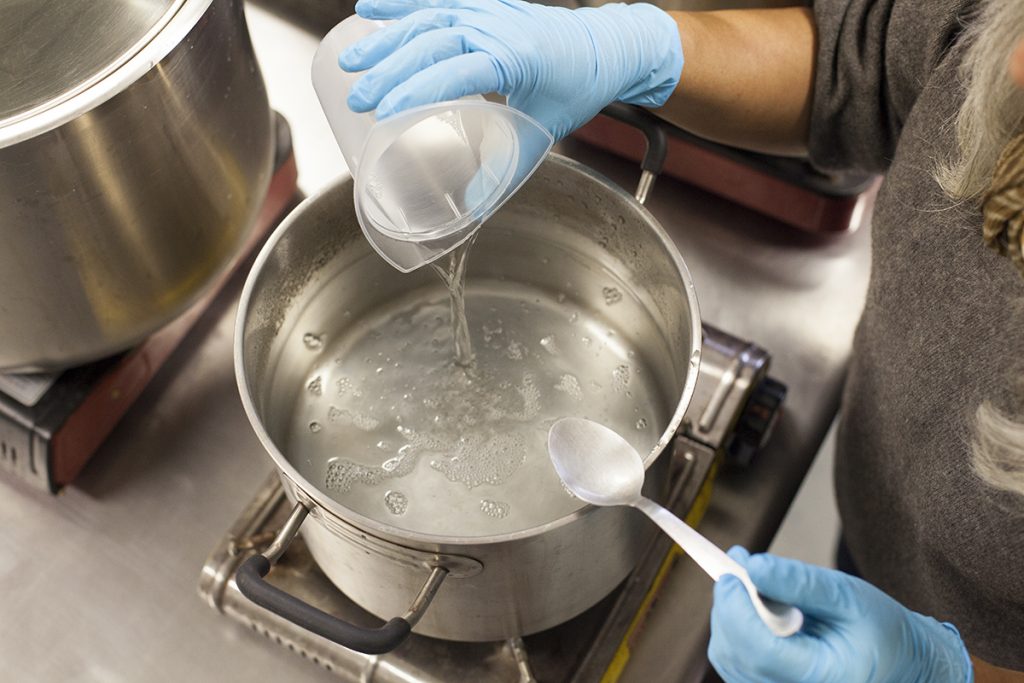
Each week, we are emailed with questions from our natural dye community asking simple and complex questions that we thought might be worth sharing. Here are a handful from this week answered by natural dyer in chief, Kathy Hattori, Founder of Botanical Colors:
1. When scouring fabrics, is it ok to use a washing machine (hot water setting) if the fabric is too large (approximately 1 yard) for the stockpot or does it always need to be simmered in the pot on the stove? Will you see a difference in terms of cleanness of the fabric?
Cleaning the fabric prior to dyeing is one of the most important steps to successful color. If the fabric is sold as Prepared for Dyeing (PFD) or Ready for Dyeing (RFD), then it is possible that a hot water wash with soda ash will be sufficient to cleanse the fabric. However, if the fabric is soiled or stiff with starch or other additives, then it’s better to scour the fabric in a stockpot. You will be surprised how much comes out of the fabric when it is simmered.
2. Can scoured fabrics be stored for a few days before I actually dye them or do they need to be put in the vat (I’m dyeing with indigo) right away? I heard that the fabrics will not absorb the dye well if they are put away too long. Is it true?
I have not had a problem with stored and scoured fabric. Be sure to soak the fabric at least 30 minutes in water and ensure that all areas are wet before adding the fabric to the vat or the dye bath.
3. Is there a way to tell if fabric and fiber has all ready been mordanted? I mixed up some fabric while moving into my new studio (yeah!) and was also given some fabric by the family of a recently deceased friend who did eco-printing and natural dye work. I’m pretty sure some of this fabric and fiber is mordanted, but can’t know for sure. All the fabrics and fiber in question are cotton, linen, or silk, but for future reference, please address animal fibers, as well. Thank you for any and all help.
The easiest way to determine if an unlabeled fabric is mordanted it to cut a small swatch from the fabrics in question and try dyeing them in a strong color such as madder extract. If the fabric has been mordanted, it will absorb the color and develop into a deep red shade that stays even after rinsing. If not, it may acquire a stain, but the color will wash out almost immediately. I label all fabrics with a label that is pinned to the fabric to keep track of fiber content and mordant information.
4. If I make a large indigo vat, will it store well? Just want to know how much dye powder I need to buy if I can’t keep a vat for further use.
Indigo vats can keep for a long time. There are several dyers who have kept their indigo vats working for over 20 years. If you use the 1-2-3 vat, you can rebalance it with calcium hydroxide and fructose. With other types of vats, check the pH and add alkali and a reducing agent and wait for the vat to balance.
